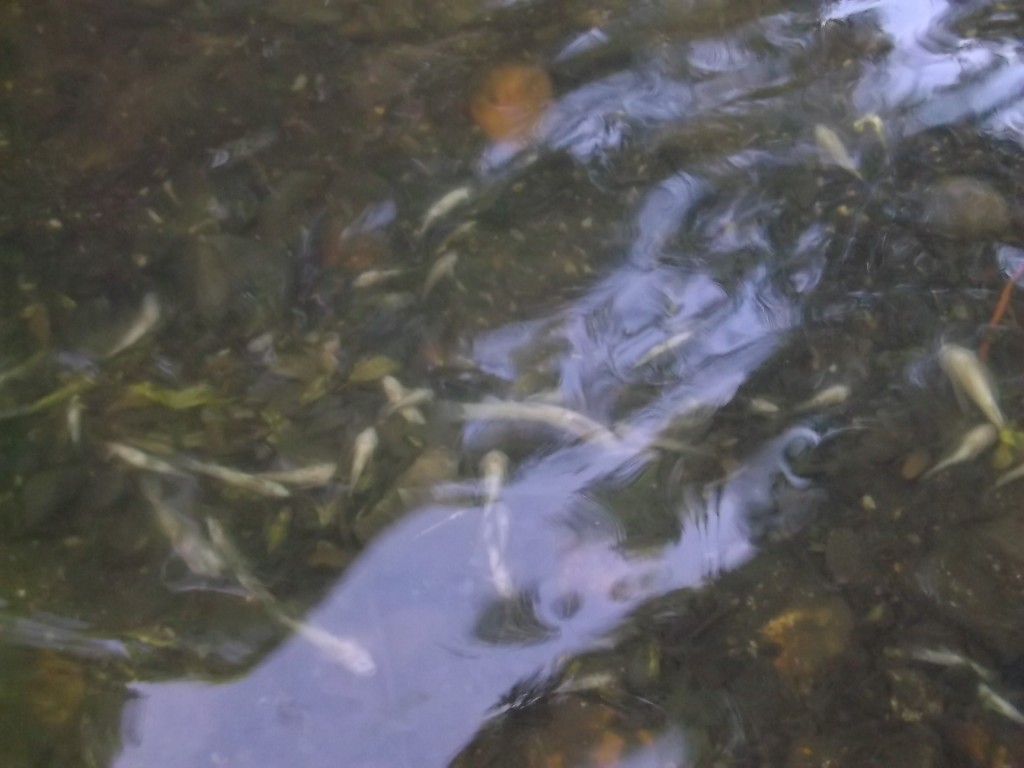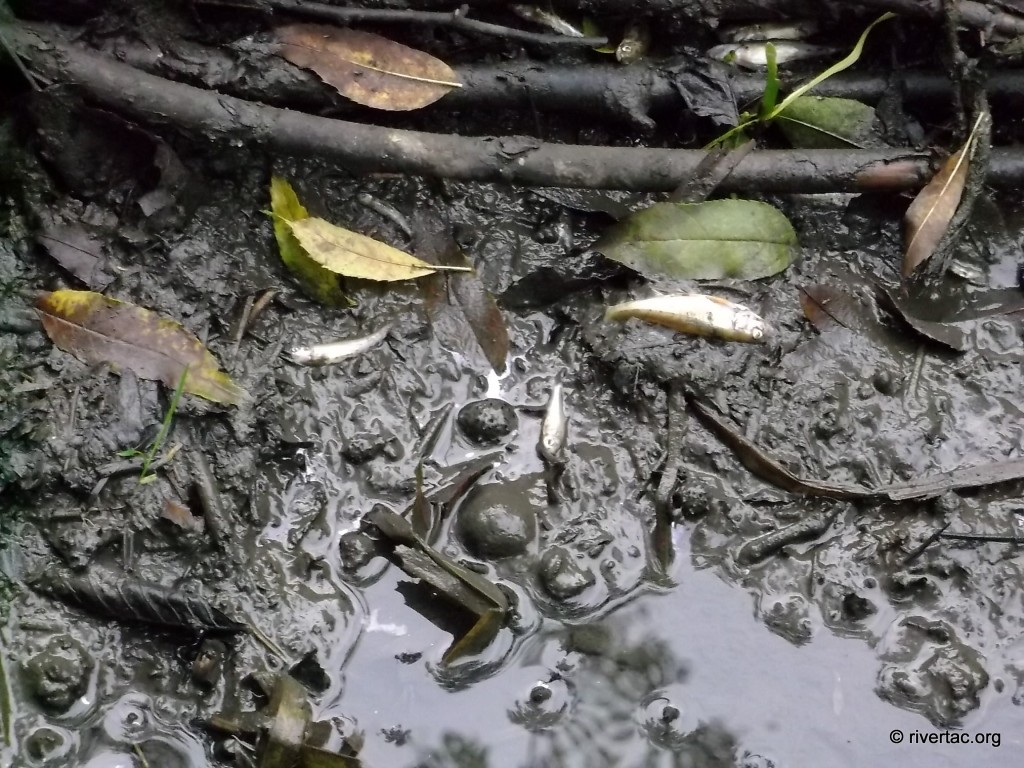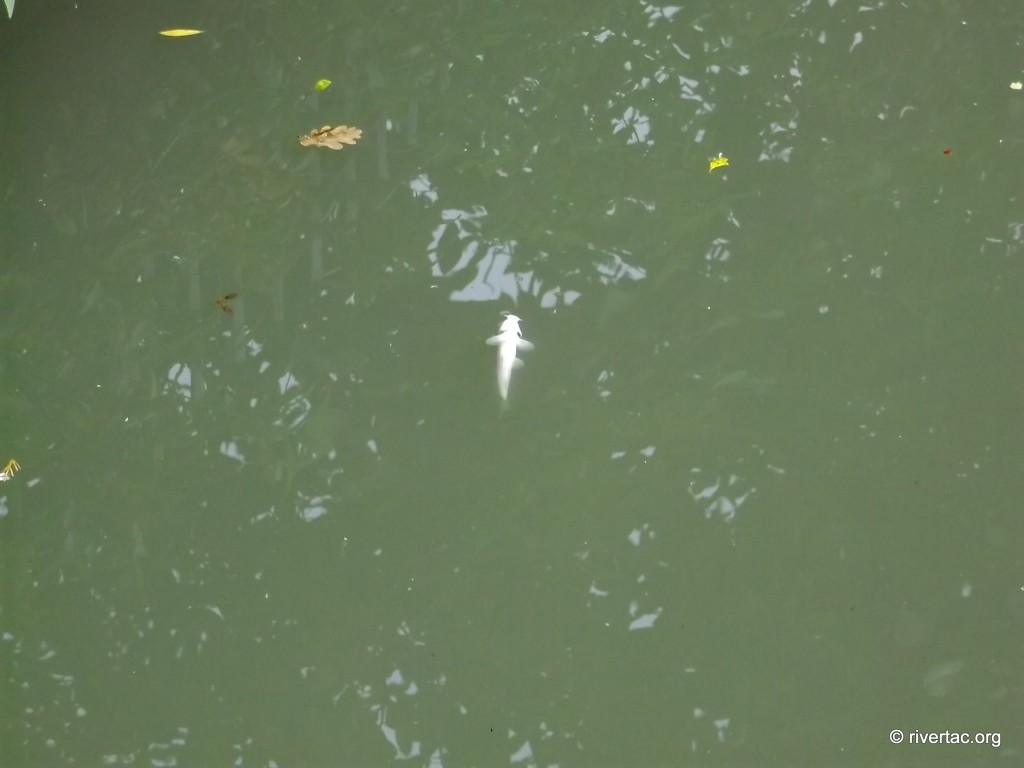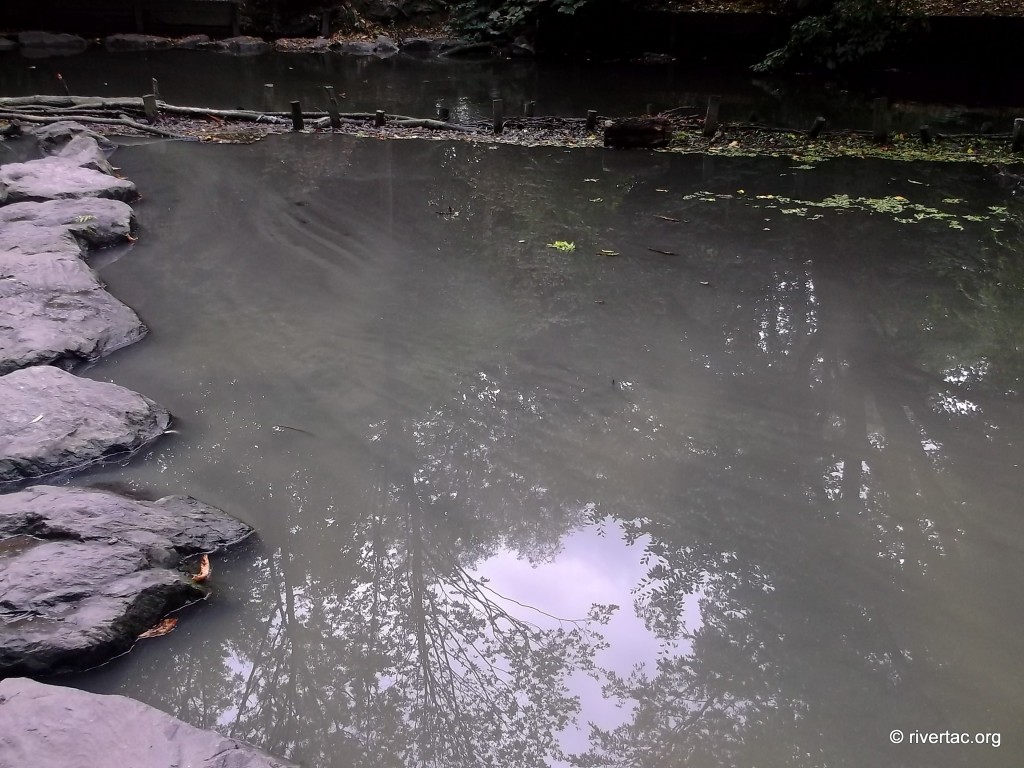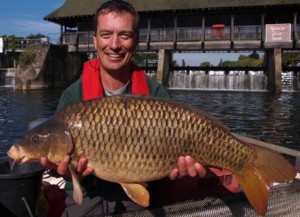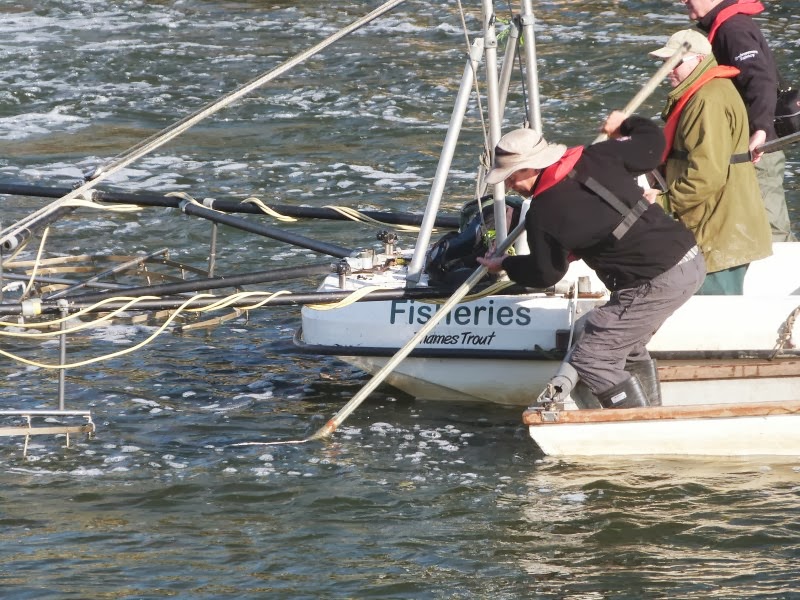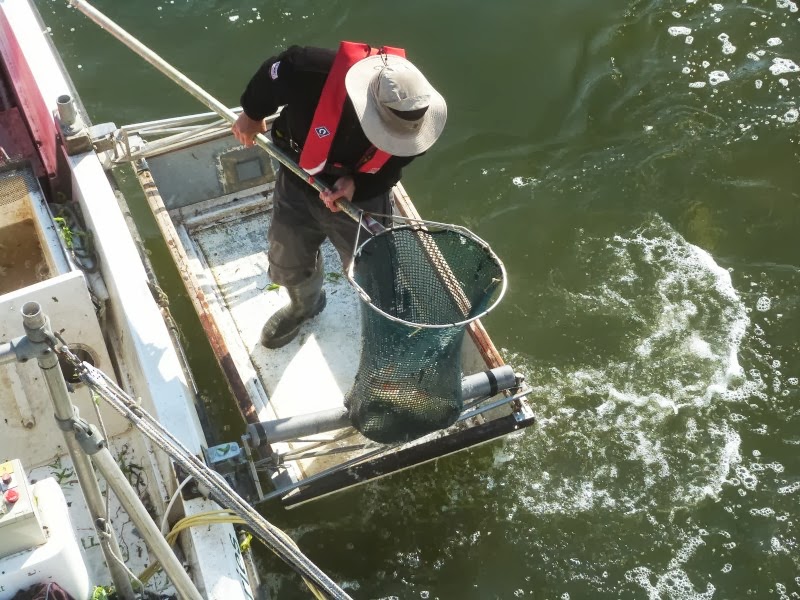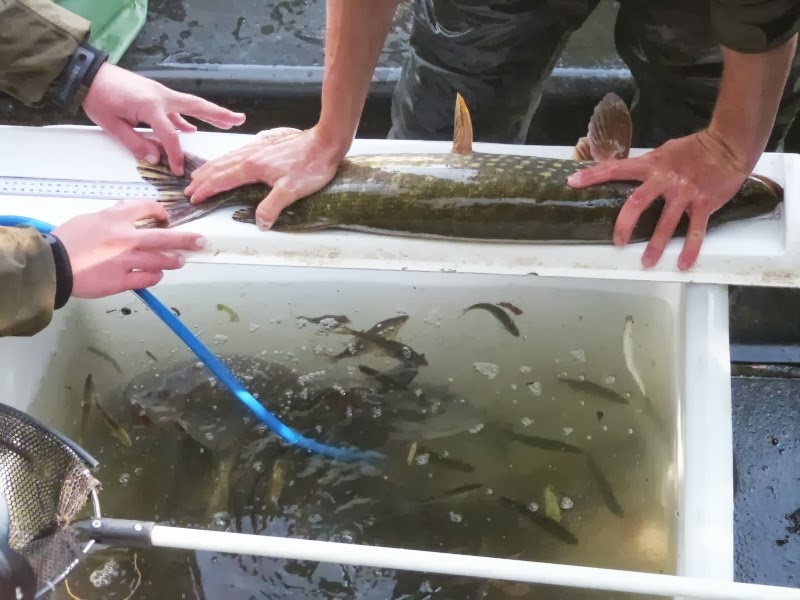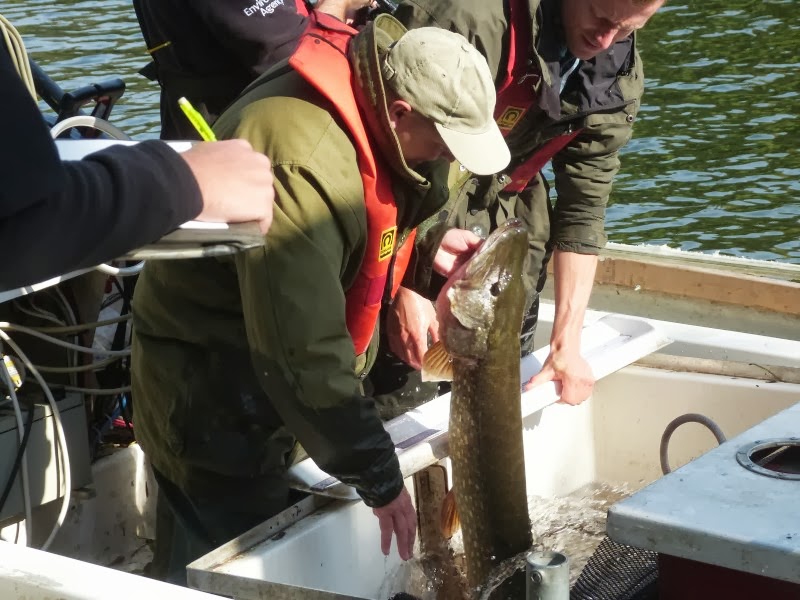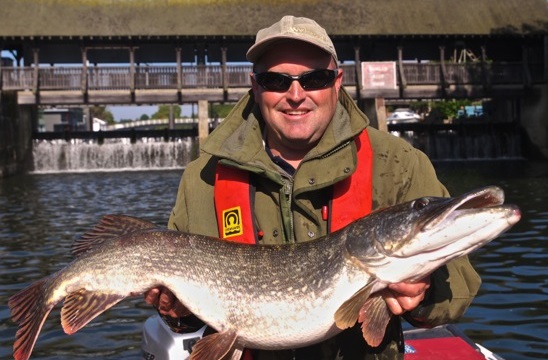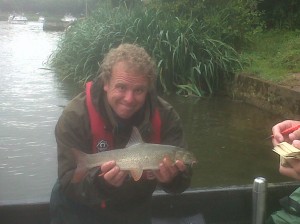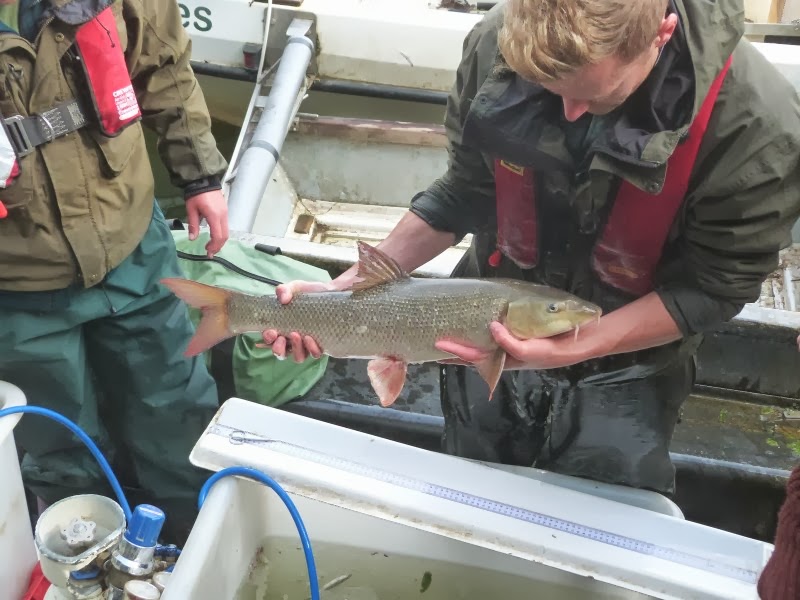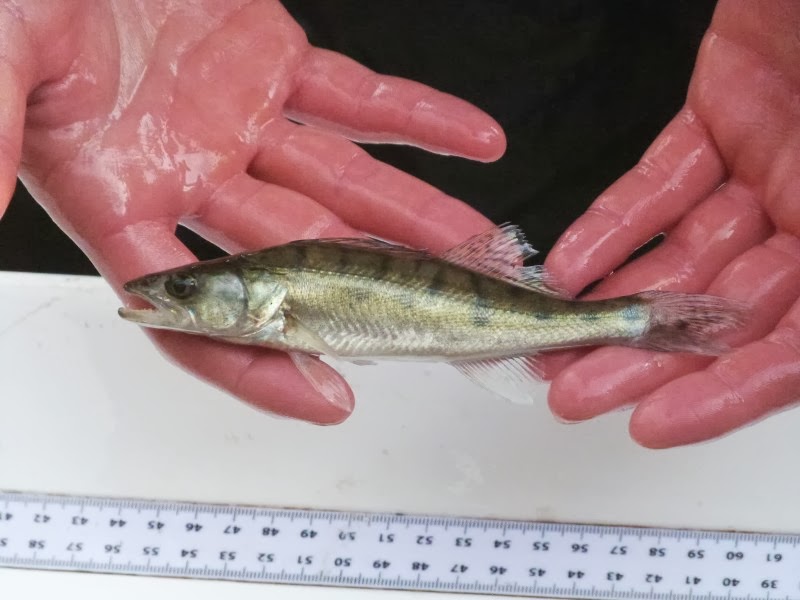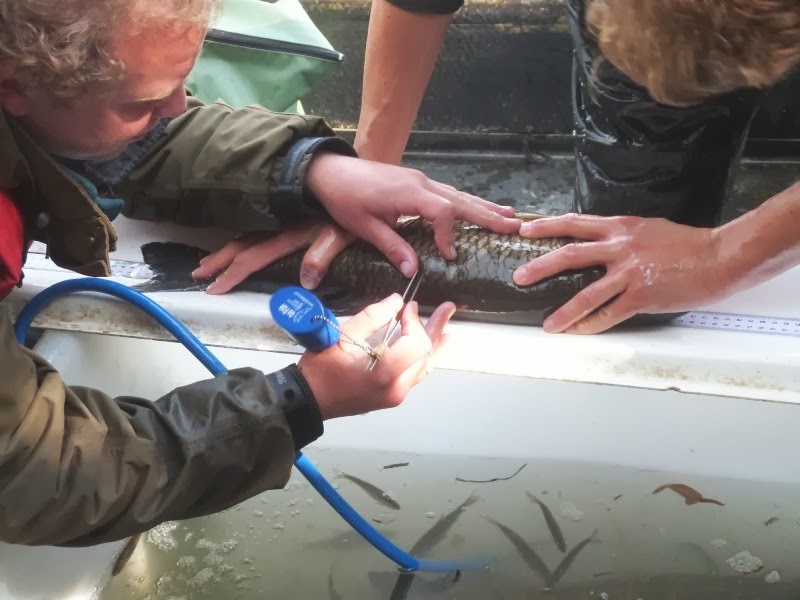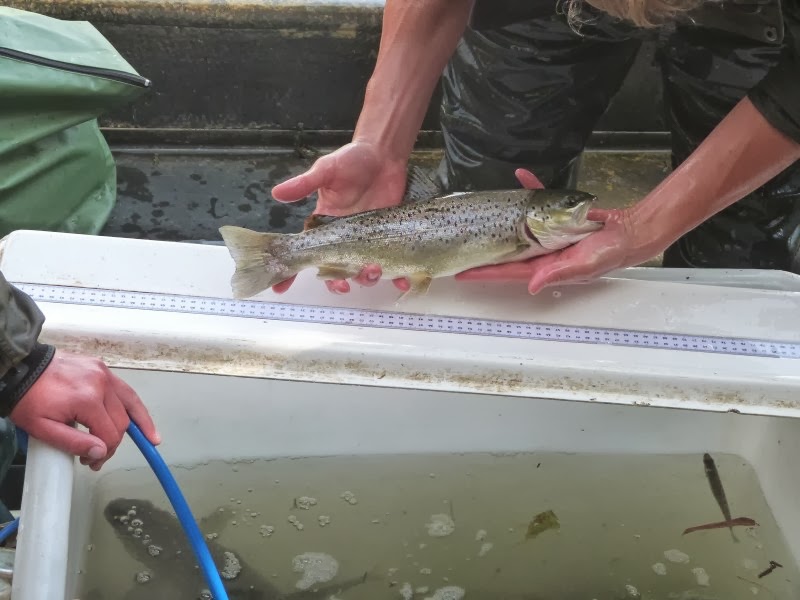-
- Buy a UK rod licence: EA Link
- 0800 807060 EA Hotline, Pollution, Poaching
- Thames Region River Levels
- Thames River Conditions
- Thames Temps and Clarity
- Thames Fishing Byelaws
- Thames Annual Tidefest
- Thames Record List
- Thames Eel Monitoring
- EA Annual Fisheries Report
- EA Flood Warnings
- Thames Sewage Discharge Notifications
- Thames Sewage Events
- Thames Tideway Tunnel
- River Thames Scheme: Reducing flood risk from Datchet to Teddington
- Martin Salter: Fighting for Fishing Blog
- Duncan Charmans World of Angling Blog
- Angling Trust
- Water and sewerage companies in England: environmental performance report 2013 – 2016
- EA Pollution incidents: 2014 evidence summary
- EA Pollution incidents: 2015 evidence summary
- River Crane and DNR Fisheries Impact assessment
- Links
Recent Tweets
Error retrieving tweetsNews Archive
Water Bill – A Missed Opportunity – Angling Trust urges MPs to stand up for our rivers
Posted in News
Comments Off on Water Bill – A Missed Opportunity – Angling Trust urges MPs to stand up for our rivers
Farm fined after ‘Catastrophic’ death of 15,000 fish
Thousands of fish died from pollution and thousands more were rescued by Environment Agency staff from a river at Halstead in Essex when toxic chemicals were spilled. Berwick Hall Farm was responsible for the pollution and today (Tues 26 Nov) appeared before magistrates to answer charges. The farm was fined £34,000 and ordered to pay full costs of £32,997 and a victim surcharge of £120.
Mr Matthew Clark, the company director, was driving a tractor over a badly constructed bridge trailing a sprayer of agricultural chemicals when it tipped and emptied much of its contents into Toppesfield Brook, a tributary of the River Colne. Mrs Anne-Lise McDonald, prosecuting for the Agency, said the incident could have been prevented had the bridge been constructed and maintained properly or if the director had chosen a different route to avoid the river crossing. Magistrates heard that approximately 12,300 fish were killed in the River Colne and 3,000 were killed in the brook during the pollution on 13 June 2012.
Environment Agency fisheries officers mounted a round the clock rescue of 7,700 fish with the help of officers from other parts of the country when the Agency initiated its major incident procedure. Mrs McDonald told the court that at the time of the pollution Anglian Water was taking water from the River Colne to fill Ardleigh Reservoir but had to stop operations for 27 days, depleting the amount of stored water.
The company also pumped water from two of its boreholes into the river to try to help dilute the pollution. The farm’s director told Agency officers he thought the wheel of the crop sprayer he had been towing had caught in a rut tipping it over and spilling about 5,000 litres of agricultural chemical into Toppesfield Brook. An environment officer suggested that he and the director should investigate reports that the water was white at Stambourne Bridge suggesting it might be concentrated there and possibly could be pumped out. The director followed the officer but said he did not have a suitable pump and could not help any further. More staff from the Agency were called along with the fire service, said Mrs McDonald. They dammed the brook and pumped the contaminated water onto adjacent fields which went on throughout the night. By the following morning the fields were saturated but downstream the water was still polluted so they set up two more dams and pumped more water onto other fields. Mrs McDonald said dead fish were already evident downstream of the third dam.
In a written response to questions from the Agency, the company said pipes in the bridge/culvert had been replaced earlier in the year but the bridge had been used safely since. The director had been on his way to spray crops on the fields of Hole Farm when the accident happened. He had notified the Environment Agency. The company said although there were other accesses to the field they believed the bridge was the safest. A structural report from an engineering company concluded that the bridge had been constructed in a way that ruts were likely to appear. Berwick Hall Farm suggested that significant rainfall may have made the surface of the bridge slippery and/or potentially unstable and regretted the damage caused to the surrounding area, the local fish and animals. Biologists said that for 15km downstream from the spill macro invertebrates were either dead or dying. The pesticide pollution was the cause of the death of the fish and the invertebrates.
Stephanie Coates, solicitor for the defence said in mitigation that the company had acted swiftly to report the incident and had shown remorse for the damage caused.
After the hearing Environment Agency officer Peter Cooke said: “This incident had a catastrophic impact on fish and aquatic life in Toppesfield Brook and the River Colne and affected drinking water supplies many miles away. “The prompt reporting enabled the Environment Agency to dam the river and save the fish. “The significant ecological damage, combined with today’s fine, and the huge costs incurred by the farm insurers, should act as a sobering reminder to all pesticide users of the acute and toxic nature of the chemicals they use’ Environment Officer Ralph Robinson, first on the scene, said: ‘When I arrived Toppesfield Brook was already milky white in colour and there was a pungent chemical smell in the air. The sprayer was toppled on its side on the bridge and the strong flow on the brook was causing the pesticide to disperse downstream rapidly.’
Posted in News
Tagged EA, Environment Agency, Fish KIll, Pollution
Comments Off on Farm fined after ‘Catastrophic’ death of 15,000 fish
Muted Celebrations over the Updated Hydropower Good Practice Guide
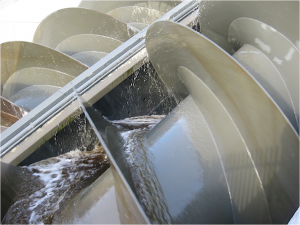 The Angling Trust and Salmon & Trout Association have jointly welcomed the Environment Agency (EA) Board’s decision yesterday to introduce new Good Practice Guidelines for hydropower that reduce the amount of water that can normally be diverted from rivers into turbines, which will have great benefits for fish and other aquatic wildlife.
The Angling Trust and Salmon & Trout Association have jointly welcomed the Environment Agency (EA) Board’s decision yesterday to introduce new Good Practice Guidelines for hydropower that reduce the amount of water that can normally be diverted from rivers into turbines, which will have great benefits for fish and other aquatic wildlife.
The organisations have attended about twenty meetings of the Hydropower Working Group over the past three years where their representatives have repeatedly pressed the EA to introduce stricter guidelines in the face of robust opposition from the British Hydropower Association (BHA), which wanted to take as much water out of rivers as possible. A decision by the Board in July was postponed following the threat of a legal challenge from the BHA.
Celebrations were to some extent muted however because of a number of outstanding concerns which the organisations raised with Lord (Chris) Smith, Chairman of the Environment Agency, in a letter which was copied to the rest of the Board in advance of the meeting.
The Angling Trust and Salmon & Trout Association raised concerns about:
The standard of evidence that developers will be required to provide to justify taking more water than the amount set out in the guidelines;
The ability of the Agency to regulate this industry properly in light of imminent budget cuts;
The continuing lack of understanding in the Agency about the cumulative impact of multiple schemes;
Relaxation of guidelines on high head schemes on upper tributary rivers which can be very important for fish spawning and gravel supply to the main river;
Relaxation of guidelines for on weir schemes – a decision that has been taken even before a study into the impact of such schemes on weir pools has concluded;
A lack of any firm conclusions from the Agency’s hydropower monitoring programme to inform the regulatory process.
Mark Lloyd, Chief Executive of the Angling Trust and Fish Legal said: “This is a major victory for fish and fishing and reflects the dogged persistence of our representatives who have given up hundreds of hours of their time to stand up for the water environment. We are very pleased to see that the importance of consultation with angling clubs and riparian owners has been emphasised in the document; our members are clearly the most important group for all developers to contact before they draft their plans. I would like to thank Roger Furniss and Alan Butterworth for all the time they gave up as volunteers to get this result, and to Janina Gray from the S&TA for her valuable input.”
A copy of the letter to Lord Smith is available Here
Posted in News
Tagged Angling Trust, Environment Agency, Fish KIll, Hydropower, Pollution
Comments Off on Muted Celebrations over the Updated Hydropower Good Practice Guide
River Crane Pollution Appeal
River Crane pollution incident Update from the Environment Agency
We would like to update you on the recent pollution incident on the River Crane. We were made aware of reports of two incidents in the Twickenham area of the morning of Thursday 3 October 2013. These appeared to be associated with heavy rainfall. We were then alerted that afternoon by the monitoring station on the River Crane of low dissolved oxygen and high ammonium levels.
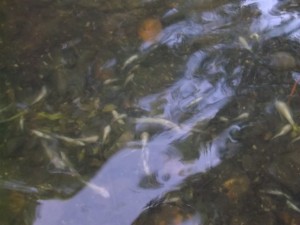 An immediate investigation began, with an Environment Officer deployed to site that afternoon and multiple officers on site the next day from first light. Working with Thames Water we began to trace the course of the pollution through the surface water sewers. As a precautionary measure Thames Water ceased pumping sewage sludge through their foul main, which is located in the area. The discharge from the outfall stopped on Friday afternoon and we began to see improvements in the water quality.
An immediate investigation began, with an Environment Officer deployed to site that afternoon and multiple officers on site the next day from first light. Working with Thames Water we began to trace the course of the pollution through the surface water sewers. As a precautionary measure Thames Water ceased pumping sewage sludge through their foul main, which is located in the area. The discharge from the outfall stopped on Friday afternoon and we began to see improvements in the water quality.
Investigations showed that a Thames Water main carrying treated sewage sludge between their treatment works at Mogden and Iver was fractured by an unknown third party. It was sewage sludge from this damaged pipe that caused the pollution. The damage to the sludge pipe was repaired by Thames Water on Saturday morning 5 October. The Environment Agency is now carrying out a criminal investigation into identifying those responsible.
We are asking for the public’s help for information relating to this incident. You can find full details of our appeal at the end of this update.
We have been assessing the full impact of the pollution incident which affected the River Crane. Our water quality monitoring stations have revealed water quality downstream of the site of pollution recovered to the levels found before the incident in a matter of days. Environment Officers have also been walking the riverbanks, to visually assess any significant deposits of sewage sludge along the watercourse and any other physical impact to the environment. Whilst along much of the length of the River Crane the water clarity has improved, there are some stretches, particularly where the river is more slow flowing, where the water remains turbid and deposits of sewage sludge have been identified. We have been conducting upstream and downstream fishery and invertebrate surveys, to give a clearer picture on the impact to river life.
Although a significant number of fish and invertebrates died, we have seen evidence that some have survived; fisheries surveys are still ongoing.
Appeal for information
Between Thursday 26 September and Thursday 3 October 2013 we believe a low loader lorry delivered a 360 tracked excavator to open land at the Parkway (A312) junction with High Street, Cranford, TW5. The excavator was picked up by another low loader lorry – possibly the same one – on Wednesday 2 or Thursday 3 October. While the excavator was on site, tipper lorries entered and deposited soils and other material which was pushed up and shaped into a low embankment around the site by the excavator. We believe that this activity happened during the day, into the evening and throughout the weekend.
The weight of the vehicles, and possibly excavations carried out, appear to have fractured a sewage sludge main that runs beneath the site and the sludge escaped via the surface water drains to the river causing the pollution. We are appealing for information that will help us identify any of the lorries or machinery used. This includes for instance make, model or registration numbers, company names, livery or hire company names to assist our investigation. The site entrance is next to a 24 hour bus stop and The Queens Head pub. The operating area is visible from Cranford High Street and the A312 Parkway.
Both the waste and water pollution offences carried out here were criminal offences.
You can report any information through our incident hot line on 0800 80 70 60 or through Crimestoppers on 0800 555 111, online at https://secure.crimestoppers-uk.org/ams.form.anonymous.asp’
Posted in News
Tagged Environment Agency, Fish KIll, Pollution, Thames, Thames Water
Comments Off on River Crane Pollution Appeal
River Crane devastated by new Pollution Incident
The River Crane in West London has been devastated by a new pollution incident following the total wipeout of all species in October 2011.
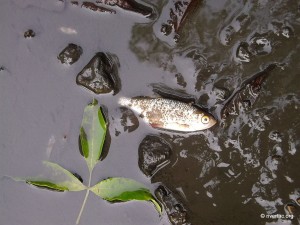 This new pollution incident was reported after local people saw dead fish floating in the river on Friday 5th October and reported the river turning black and emitting an acrid smell.
This new pollution incident was reported after local people saw dead fish floating in the river on Friday 5th October and reported the river turning black and emitting an acrid smell.
The Crane was still recovering following the pollution in 2011 when an infrastructure failure during routine maintenance by Thames Water near Heathrow saw a Tsunami of raw sewage pour down the river, killing all life in a seven mile stretch. During that incident an estimated 10,000 fish were killed including mature Barbel, Roach, Chub, Pike and Perch.
In July 2012 members of the Thames Anglers Conservancy sampled several areas for invertebrate life and found that they had returned in abundance, this in part was due to the spring floods cleansing much of the remaining sewage sediment from the river. Then in December 2012 the Environment Agency had begun the first of a long term restocking program with 5500 fish going in to restore some of the stocks that had been lost.
Scores of dead fish in a small area
The TAC has extensively walked and visually surveyed the river in the past 2 days and believe that there has been a complete fish kill below the source of the pollution. No live fish were observed, only the remains of a once healthy and recovering population can been seen littering the banks and riverbed. True number may never been known but will run into many thousands when considering the fry that were seen.
In recent months anglers had started returning to the river and reported the fish healthy and thriving.
One of the stocked Barbel floating dead in the river
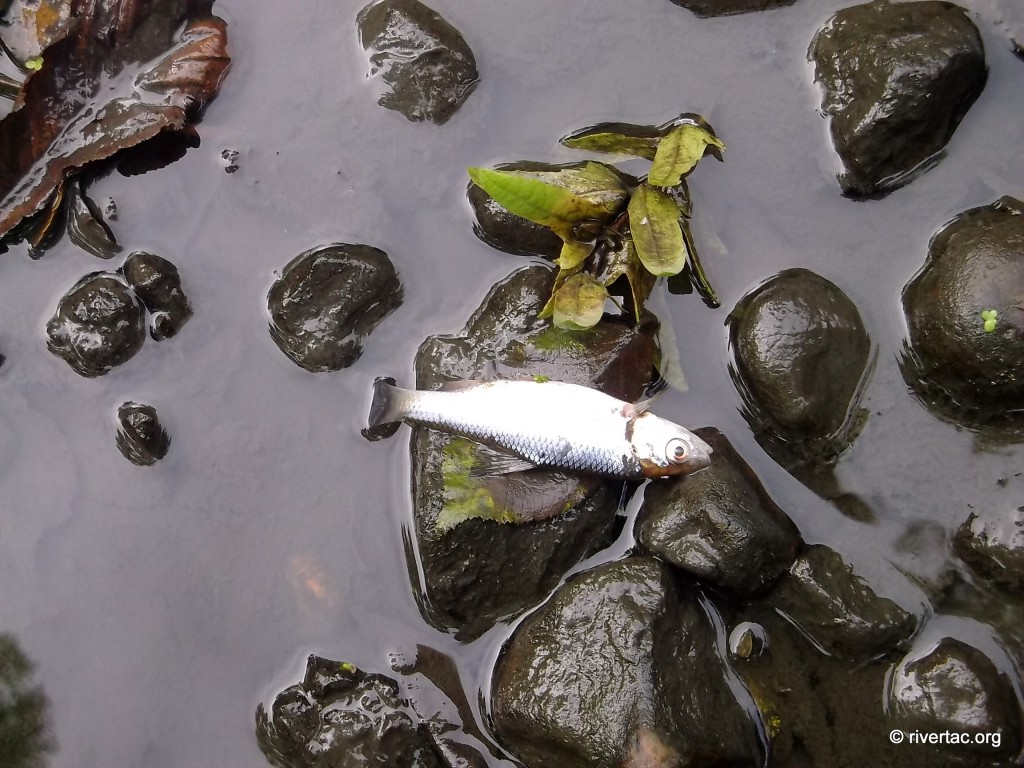 David Harvey Chairman of the Thames Anglers Conservancy said: 'This is a devastating blow to the river, quite unbelievable it has happened again and with the same severity, its almost surreal. We have been involved since the original incident in 2011 and with others secured £400,000 from Thames Water towards the full restoration of the Crane and to improve the robustness against it ever happening again. Now we have seen it happen again. We fear that all the fish have been lost along with those that had naturally recruited from the upper reaches.
David Harvey Chairman of the Thames Anglers Conservancy said: 'This is a devastating blow to the river, quite unbelievable it has happened again and with the same severity, its almost surreal. We have been involved since the original incident in 2011 and with others secured £400,000 from Thames Water towards the full restoration of the Crane and to improve the robustness against it ever happening again. Now we have seen it happen again. We fear that all the fish have been lost along with those that had naturally recruited from the upper reaches.
'Many questions need to be answered, we hear that the pollution may have started as early as Wednesday, was it reported and how did the authorities respond? There is still a distinct lack of water quality monitoring stations on the Crane, the early warning of any incidents, why 2-years on are not more controls in place?'
'In the 21st century how can it be that our rivers are still the default position for any outfalls, any road run off, where is the protection that they need. I am tired of seeing plans which will never deal with the real problem of outdated and antiquated infrastructure where we are living in the dark ages. It just seems a question of where next, every river is under threat. We need action, we need criminal prosecutions that produce fines that are a real deterrent.'
Posted in News
Tagged Environment Agency, Fish KIll, Fishing, Pollution, Thames Water
Comments Off on River Crane devastated by new Pollution Incident
Fish Legal Seeks Judicial Review of Environment Agency
 Fish Legal, acting on behalf of its member club the Cropston Angling Association, seeks judicial intervention in a row over water transfers harming Cropston Reservoir Site of Special Scientific Interest (or SSSI). Currently, the Environment Agency does not routinely regulate transfers of surface water by water companies (or others), even though they can cause significant damage.
Fish Legal, acting on behalf of its member club the Cropston Angling Association, seeks judicial intervention in a row over water transfers harming Cropston Reservoir Site of Special Scientific Interest (or SSSI). Currently, the Environment Agency does not routinely regulate transfers of surface water by water companies (or others), even though they can cause significant damage.
Despite being a conservation site the once pristine lake suffers from nutrient enrichment (or eutrophication). Cropston forms part of a series of reservoirs owned by Severn Trent Water used to supply drinking water. Under licences granted by the Environment Agency large quantities of water can be pumped into Cropston from other nearby reservoirs, but these have historically had much higher nutrient levels (of phosphates) and as a result have contributed to the decline of water quality at Cropston. Despite acknowledging this problem in its own 2004 report, the Environment Agency refuses to control or prohibit the amount of nutrients pumped into Cropston, even though they are a pollutant. Cropston Angling raised the alarm many years ago and has campaigned tirelessly to protect the SSSI and its fishery since problems started back in the late 1990s. Despite years of campaigning the regulator still refuses to protect the reservoir by controlling the transfers under an Environmental Permit. An Environmental Permit would set limits on the amount of specified pollutants that could be discharged into the reservoir.
In recent correspondence the Environment Agency confirmed this could be a country-wide problem affecting many other waters. It said: "…consideration was being given within the Agency to the circumstances in which a transfer of surface water may constitute a “Water Discharge Activity” under the Environmental Permitting Regulations 2010 (‘EPR 2010’). That is a question which potentially impacts on a large number of existing water transfers across the country, and which may have considerable regulatory implications for the Agency and those who make, or are affected by such transfers. It is not a matter on which a final view can be taken purely by reference to the circumstances at Cropston Reservoir which concern your client." Fed up with excuses, Fish Legal insisted they recognised their duty under EU and National Law to prohibit or control discharges of pollutants at Cropston, as part of a range of measures aimed to improve the water environment. There has been a trout fishery at Cropston for over a hundred years, and it was once considered one of the best reservoir game fisheries in the country. Unfortunately, the impact of these water transfers meant the fishery and its popularity declined. Fish Legal wants the Environment Agency to act so that both this important environmental site and the fishery it holds are returned to their former glory.
Ian Kilgour, leaseholder and operator of Cropston Angling Association, said: “Having fished at Cropston Reservoir for over thirty years I am very much aware of the harmful effects that changed pumping and management procedures have had on the nature conservation and angling interests of the reservoir. These changes have occurred since the water industry was privatised. Natural England , who manage the reservoir as a Site of Special Scientific Interest, have classified Cropston Reservoir as being in “Unfavourable Condition” because of this decline in condition over the past decade. Despite years of correspondence and meetings with the relevant authorities I have failed to get any meaningful action to restore the quality of the nature conservation and angling interests on Cropston Reservoir. I am now extremely grateful for the help and expertise that Fish Legal is able to provide.”
William Rundle, Head Solicitor at Fish Legal, said: “Nutrient enrichment of water bodies is a wide-spread problem suffered across the country, but that is no excuse for failing to tackle it. We have repeatedly asked for decisive action from the Agency at Cropston, to protect and restore the reservoir. Unfortunately, it has now proved necessary to start court proceedings and we must wait to hear the view of the Judge on this matter.”
Mark Lloyd, Chief Executive of the Angling Trust and Fish Legal said: “The Agency should jump at the chance to force water companies and others to prevent pollution in all their waters which would have benefits for wildlife, fish, anglers and the whole of society. Fish Legal is backed by a fighting fund accumulated over the past 65 years from subscriptions, donations and legacies from its members and this will help us fight this expensive legal case.”
Posted in News
Tagged Angling Trust, Environment Agency
Comments Off on Fish Legal Seeks Judicial Review of Environment Agency
Northumbrian Water Ltd fined £10,000 for Sewage pollution
Northumbrian Water Ltd was fined £10,000 at Newcastle Magistrates yesterday (24 September), for causing sewage pollution to a stretch of the Ouse Burn in Ponteland.
Northumbrian Water Ltd, of Abbey Road, Pity Me, County Durham, was also told to pay costs of £3,802 to the Environment Agency, which brought the case. The company was also ordered to pay a victim surcharge of £1,000.
The court heard how on 13 March 2012 a member of the public contacted the Environment Agency through its incident hotline to report that there was raw sewage in the Ouse Burn at Callerton, Ponteland.
An Environment Agency officer tried to attend the scene that evening but failed to locate the incident in fading daylight. More officers visited the burn the following morning, where they located the source of pollution, about 200 metres downstream of Armstrong Street, Callerton. The discharge was from a combined sewer outfall with a flap valve next to Pipe Bridge over the Ouse Burn, which was believed to be part of the Northumbrian Water Ltd sewer network.
The officer saw that the discharge consisted of raw sewage, which included faeces, sewage litter, sewage fungus and effluent. The majority of the discharge was a grey colour with a strong sewage smell.
Two hundred metres downstream, officers found grey fungus across the whole bed of the Ouse Burn. Upstream of the discharge, the water was clean and clear.
The environment officers contacted Northumbrian Water Ltd, and when they attended the scene, formal samples of the discharge were taken. The greater the biological oxygen demand in the water, the greater the pollution and the water is less able to support life. Officers also took field readings of dissolved oxygen in the watercourse using a dissolved oxygen meter.
The sample taken five metres upstream of the discharge confirmed biological oxygen demand of less than 2.9 milligrammes per litre. The sample from the discharge point confirmed biological oxygen demand levels of 450 milligrammes per litre.
Following investigations in the local area the officers concluded that the pollution was most likely to be from the sewer pipe.
Negative impact on ecology
The dissolved oxygen readings taken below the pipe bridge were all low enough to cause a significant negative impact on the ecology of the Ouse Burn.
On the 6 July 2012 representatives for Northumbrian Water Ltd attended Environment Agency offices in Newcastle where they were interviewed under caution. They explained that after receiving a call about the discharge, at 11.49am on 14 March, staff attended and were at the location just over an hour later.
Northumbrian Water Ltd said staff found the blockage in the pipe that caused the sewage to leak at 1.10pm which was cleared within a few minutes. They explained that the manhole cover that should have been over the outlet was missing and that they had been unaware of the existence of this outlet. The reason for this was, they explained, that when they had taken over responsibility for water and sewage from the local authority, this particular outlet had not been shown on the plans provided to them.
They accepted that there had been a discharge from the outlet but argued that the degree of pollution caused by this alone, did not cause a category one pollution incident, which, on a scale of 1 to 4, is the worst level of pollution.
The outlet at the Ouse Burn has now been permanently stopped so that there cannot be a repetition of this incident.
The day after the discharge was found, an Environment Agency officer went back to the scene to assess the impact on the watercourse. The officer found a thick covering of sewage fungus for one kilometre downstream of the original discharge point. There were dead invertebrates present at all the downstream sample sites and in the stream in between sites.
Approximately 40 metres downstream of the pollution source, effluent from a pig farm was observed discharging into the Ouse Burn via a drain from the property and a small tributary running alongside the property. Samples could not assess the long term impact of the pig farm at this time as any impacts were being masked by the sewage discharge.
Another investigation in November found that the sites downstream of the discharge had recovered since March indicating that the pig farm was not the cause of the impacts on the burn observed in March and the discharge from the Northumbrian Water Ltd outlet was the main cause of those impacts.
Northumbrian Water Ltd responded quickly to Environment Agency contact and fully co-operated throughout the incident.
The lead officer for the case at the Environment Agency said: “We take cases of pollution to watercourses seriously due to the environmental damage that can be caused. If anyone witnesses any pollution in their local watercourse, they can report it to our incident hotline on 0800 80 70 60.”
Posted in News
Tagged Environment Agency, Sewage
Comments Off on Northumbrian Water Ltd fined £10,000 for Sewage pollution
EU Parliament demands tougher rules to save the European Eel stocks
Posted in News
Tagged Eels, Environment Agency
Comments Off on EU Parliament demands tougher rules to save the European Eel stocks
The National Anguilla Club calls for no more Eels as bait
 With the traditional pike season fast approaching The National Anguilla Club is asking predator anglers to cease using eels as bait, and choose sustainable alternatives instead.
With the traditional pike season fast approaching The National Anguilla Club is asking predator anglers to cease using eels as bait, and choose sustainable alternatives instead.
The European Eel (Anguilla anguilla) is officially listed BY CITIES (the Convention on International Trade in Endangered Species of Wild Fauna and Flora) as a ‘critically endangered species’, with stock levels believed to be as low as 5% of average levels in the 1970’s. Eels are now protected by law. In England & Wales it is an offence to remove an eel (Anguilla anguilla) from freshwater, from estuaries or inshore waters, up to a distance of six nautical miles.
Scotland’s Eel Management Plan prohibits fishing for eels by any method, without a licence from Scottish Ministers. Despite this, eel stocks are still being exploited for commercial gain. In certain parts of the world they are considered a delicacy and the export process is therefore a lucrative business. The eels sold to predator anglers as deadbaits are casualties of this trade.
Earlier this year the Angling Trust called for an end to commercial eel fishing as it is simply not sustainable. Our sport therefore needs to get its house in order by ending the demand for dead eels by anglers wishing to use them as bait. In an historic move the Pike Anglers Club of Great Britain, the Pike Anglers Alliance for Scotland and the Catfish Conservation Group have united in issuing a recommendation to their members asking them not use eels as bait, particularly when there are so many other sea and freshwater species which can be used without any negative impact on their overall populations. In helping us to take a lead on this issue PAC, PAAS and the CCG hope that this recommendation will have a positive influence upon the wider angling community, and play a valuable part in relieving pressure upon eel stocks.
Please support them on this very important issue. Don’t buy eels to use as bait when there are plenty of sustainable alternatives to choose from. Thank you.
www.nationalanguillaclub.co.uk The National Anguilla Club was formed for eel angling specialists in 1962 and is the longest continuously running specimen group. NAC membership includes fish-ins for members only, a specialist Anguilla magazine, invitations to the AGM and annual conference and also helps to fund the NAC’s involvement in eel conservation campaigns nationally.
Posted in News
Tagged Angling Trust, Eels, Fishing
Comments Off on The National Anguilla Club calls for no more Eels as bait


